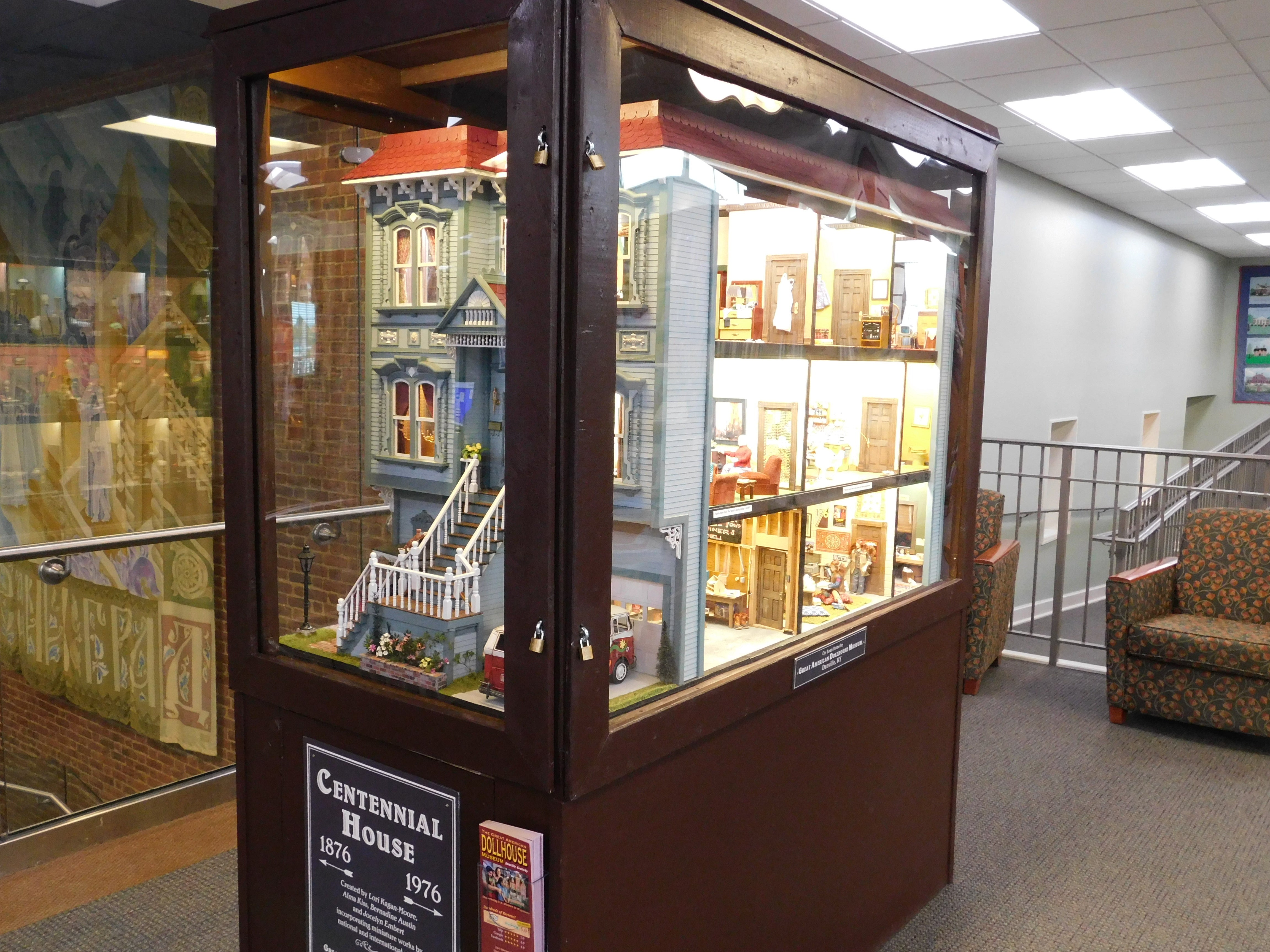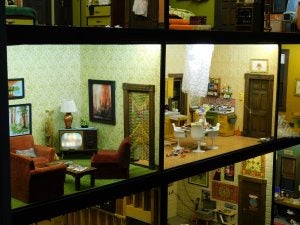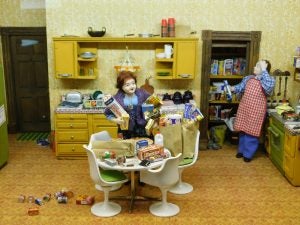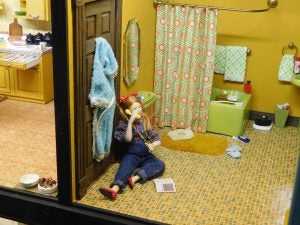New installation at library shows lives compared in 1876 and 1976
Published 8:38 pm Friday, May 10, 2019

- Photo contributed
By JEN BOUTIN

Photo contributed
BCPL
On a quiet afternoon in April, the Boyle County Public Library took delivery of a special exhibit: a dollhouse on loan from The Great American Dollhouse Museum. Named for the 100 years of history it represents, “Centennial House” features two open sides revealing 21 rooms that contrast the differences seen in everyday life in United States history, between 1876 and 1976.
This exhibit will be on display for the next two years and can be found on the 5th level of the library.
Museum Director Lori Kagan-Moore answered a few questions about the project.
BCPL: When did the project begin, and how long did it take to complete the project?
LKM: “We began talking about this project a couple of years ago. In the beginning, we were actually planning to use a different building than the one we eventually used. But there were some logistical problems with the structure we had for it, and while we were pondering solutions, this house came on the market. It was a giant unfinished structure with broken railings, and no wallpaper. It took approximately 18 months and over 400 hours to complete.”
BCPL: What was the inspiration for the project?
LKM: “We wanted to create a project that would have the layering of history, lifestyle and family stories we always strive for in the museum’s own displays. We liked that it opens from two opposite sides, allowing us to create some kind of contrast between the world of the one side and the world of the other side. That kind of structural interest gave rise to the idea of depicting life in two different centuries, and all the changes that occurred in daily life between the Victorian and modern eras. ”

Photo contributed
BCPL: Who helped you on the project?
LKM: “Numerous local artists and our artist-in-residence, from Huntsville, Alabama, worked with me on the renovation. I chose — or in some cases, designed — the wall coverings, and volunteer artist Jo Embert did the wallpapering. Lincoln County artist Bernadine Austin created the window treatments and textured the basement walls in the 1976 side. Artist-in-residence Alma Kiss spent a couple of hundred hours working her magic on countless aspects of the Centennial House, from dressing and wigging many of the dolls to creating the 1970s orange wall phone to filling the handyman’s shed with Victorian tools.
BCPL: Where did you find all of the period pieces in each of the rooms, or did they have to be made?
LKM: “I keep a stock of artist-made and unusual pieces of furniture on hand for projects, but many of the items for ‘Centennial House’ had to be created or purchased especially for the house. I searched without success, for example, for shag rugs and 1970s style carpet and, in the end, I had to make them myself. Alma built the furniture for the 1870s basement room of the handyman/groundskeeper and his wife. It is made to look like it’s made of old crates and rough-hewn boards. There is little commercially available for a 1970s miniature domicile, so we created most of that side in-house. One of many examples is the hide-a-bed, another creation of Alma’s.”
BCPL: What is your favorite piece in the dollhouse, or favorite room?
LKM: “My favorite aspects of the house are the bits of humor we injected into the stories about the families, and the contrast between the two centuries that you see— whether or not you take special notice. For example, in the 1870s home, servants are making lots of food from whole, scratch ingredients in the kitchen. Over in 1976, the overworked mother has been to the grocery and purchased a pantry full of processed, convenient foods. I also love things I remember from my own youth. I love the orange wall phone Alma created. The teenage girl has dragged the long cord into the next room and closed the door on it. I remember the ongoing task of untangling those old landline cords.”

Photo contributed
BCPL: What else would you like people to know about this project?
LKM: “There is nothing random in the project. If you want to understand the many layers in the story, you can ask yourself, ‘Why is this object here?’ about almost everything you see. The answers should tell you something about the times, the personalities of the family members, the organization of the families, their socio-economic status … “
The Great American Dollhouse Museum showcases over 200 dollhouses, miniature buildings, and room boxes, furnished in remarkable detail and populated with tiny people at work and play. The Museum’s unique focus is the depiction of American social history in miniature. More information about the museum can be found on their website www.thedollhousemuseum.com.





